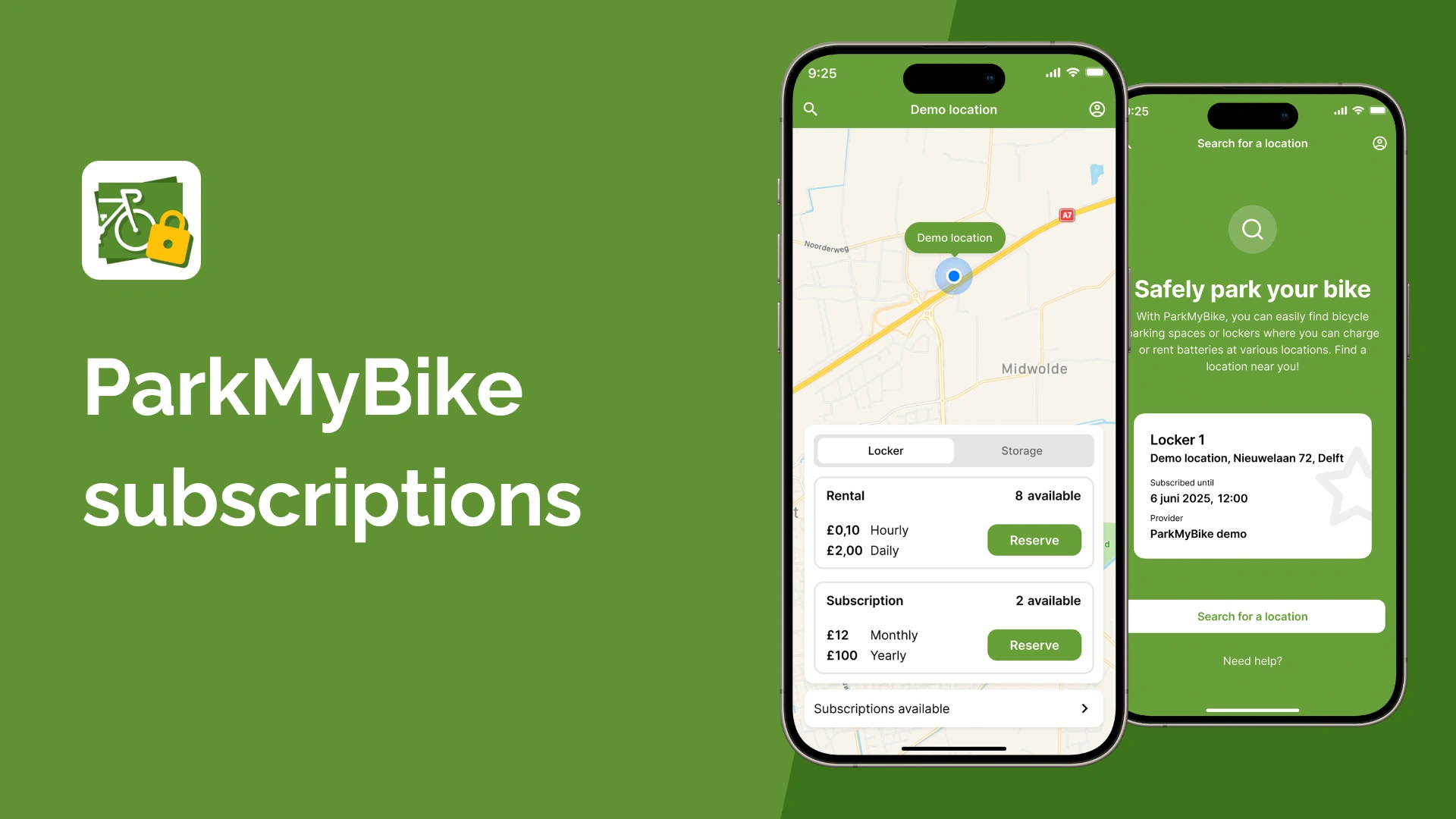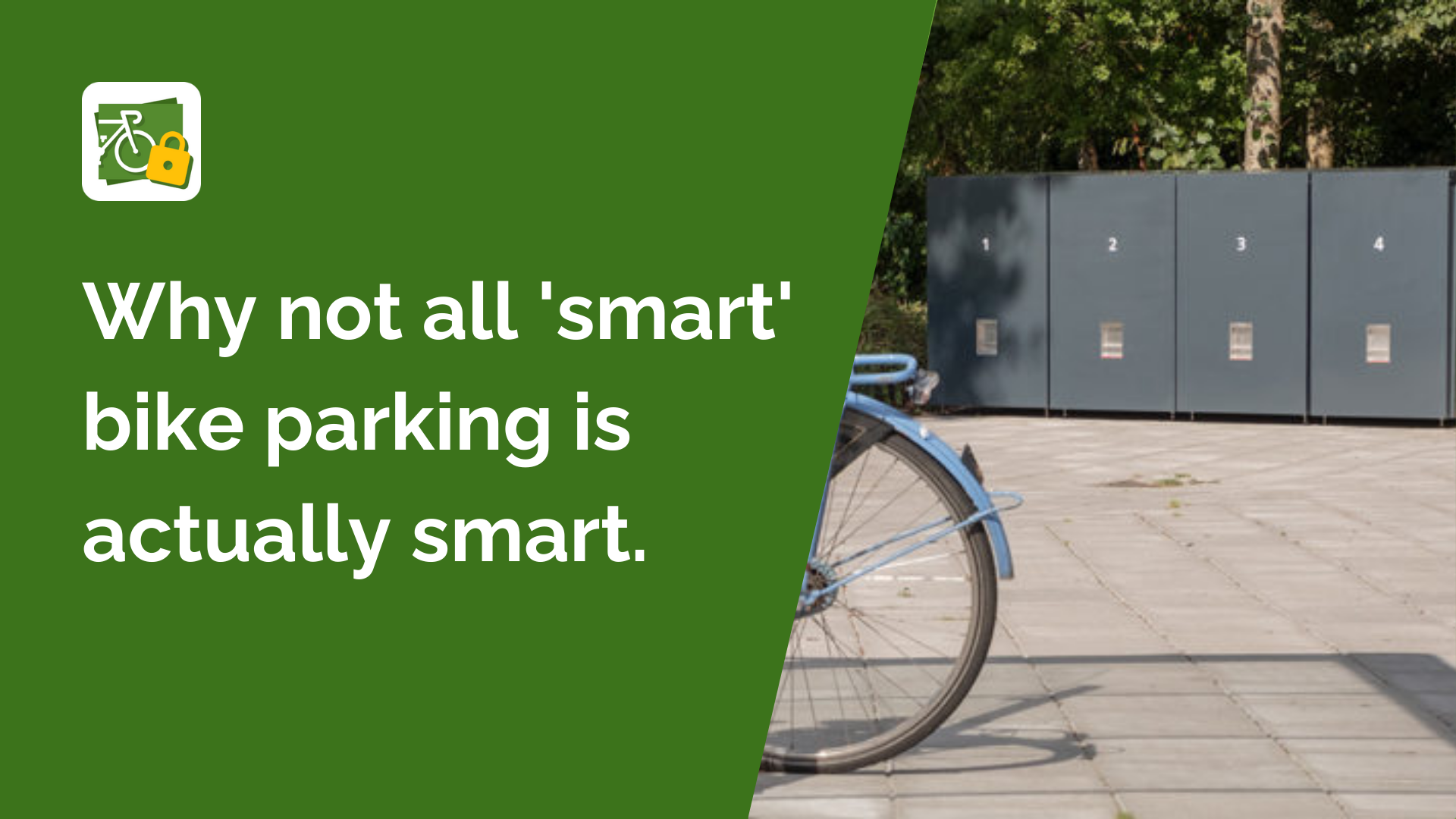Bicycle parking software: Should you build or buy?
By Julia Greijdanus on March 6, 2025

As a manufacturer of bike lockers and garages, you play a critical role in shaping the future of urban mobility. Your products provide the foundation for secure, convenient, and sustainable bike parking solutions. But in today’s tech-driven world, hardware alone isn’t enough. With cycling rates soaring across Europe and the demand for secure, convenient bike parking solutions growing, the question isn’t whether to invest in smart bike parking software—it’s how. Should you develop your own software in-house, or should you partner with a specialized provider? Let’s break it down.
What’s involved in developing bike parking software?
On paper, developing your own bike parking software sounds appealing—you get full control over every feature, integration, and customization. But it’s important to understand what you’re getting into. When you decide to add software to your bike lockers or garages, you’re not just building an app. You’re creating a whole ecosystem that needs time, money, and technical expertise. Here’s what you need to consider.
Time and cost considerations
Build: Custom software development takes time—months or even years to complete—and involves significant costs, including hiring developers and ongoing maintenance. Unexpected delays or technical issues can increase both time and expenses.
Buy: A ready-made solution offers faster implementation, allowing you to launch quickly. While there are licensing or subscription fees, they are generally more predictable and manageable than the ongoing costs of custom development.
Hardware integrations
Build: Integrating your software with hardware—whether it’s locking mechanisms, sensors, or IoT devices—can be challenging. Custom solutions require the development of communication protocols, APIs, and hardware interfaces. This adds complexity, as the system needs to be compatible with various hardware configurations and be tested for reliability.
Buy: Pre-developed platforms often come with built-in hardware integration capabilities. These platforms are typically designed to work with a variety of devices out of the box, including smart locks, sensors, and other IoT components. Hardware integration with these systems is usually seamless, and the software provider may already have tested and optimized connections to popular devices.
Backend infrastructure & scalability
Build: With a custom solution, you’ll need to design and build your backend infrastructure from scratch, including database management, server capacity, and system architecture. This requires significant technical expertise to ensure the infrastructure is robust, secure, and scalable. As your user base grows, scaling this infrastructure could become complex and resource-intensive.
Buy: Pre-developed platforms typically include a backend infrastructure designed for scalability. Cloud-based solutions can automatically scale up to handle more users, more data, or more complex features without requiring a complete system overhaul. This allows you to focus on your core business while relying on a proven, scalable infrastructure that’s managed by the software provider.
User experience
Build: The success of your software hinges on its user experience (UX). It’s not just about building a system that works; it’s about ensuring it’s easy to use and intuitive for both the customers and administrators. A poor UX can lead to frustration and low adoption.
Buy: Off-the-shelf software often undergoes rigorous user testing, ensuring that the platform is intuitive and user-friendly from day one. These solutions have been designed with best practices in mind, ensuring smooth functionality and minimal friction for both customers and administrators.
Third-party integrations
Build: If your business requires integrations with other systems (like payment processing, inventory management, or customer management), this will be a key challenge for a custom-built solution. You’ll need to ensure that the software can communicate with third-party systems, which often requires additional development and testing.
Buy: Many ready-made software options come with pre-built integrations for popular third-party systems. Whether it’s connecting to payment gateways, IoT devices, or CRM systems, these solutions are often designed with seamless integration in mind, allowing you to easily connect with other platforms and streamline operations.
Maintenance and support
Build: With a custom solution, you’re responsible for all maintenance. This includes software updates, bug fixes, security patches, and addressing any hardware-related issues. You’ll need a dedicated team for ongoing technical support and to ensure the system remains operational and secure.
Buy: With an existing platform, maintenance and support are taken care of by the provider. Regular updates, security patches, and a dedicated support team mean you can focus on growing your business without the added stress of managing the software.
The verdict: Build vs. buy
For most manufacturers, buying specialized software is the smart choice. Sure, developing software in-house gives you complete control—but it comes with hefty costs, a steep learning curve, and time delays that could distract you from your core business: manufacturing high-quality bike parking solutions.
That’s where ParkMyBike comes in. Our proven, scalable software is designed specifically for bike lockers and garages, ensuring simple hardware integration, real-time occupancy tracking, and secure access management. With ParkMyBike, you get a ready-to-use, fully supported platform and app that eliminates the technical headaches of custom development.
So why reinvent the wheel? Let ParkMyBike handle the software, while you focus on building the future of urban mobility.
Other recent blog posts

ParkMyBike Subscriptions
Subscriptions for bike lockers and garages make bike parking even easier. In this blog, we discuss how we developed this feature.

Why not all 'smart' bike parking is actually smart
What truly makes a bike parking system effective? From unreliable tech to poor integration, we’re calling out the truth behind so-called 'smart' bike parking.